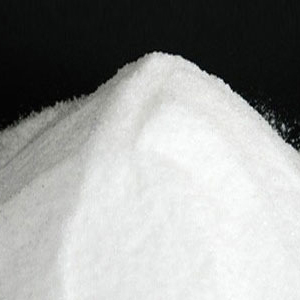
Ph Eur
Poly(vinyl alcohol) is obtained by polymerisation of vinyl acetate, followed by partial or almost complete hydrolysis of poly(vinyl acetate) in the presence of catalytic amounts of alkali or mineral acids.
Poly(vinyl alcohol) polymers comply with the following indices:
The mean relative molecular mass lies between 20 000 and 150 000. The viscosity is 3 to 70
mPas. The ester value which characterises the degree of hydrolysis is not greater than 280.
CHARACTERS
Appearance: Yellowish-white powder or translucent granules.
Solubility: Soluble in water, slightly soluble in ethanol, practically insoluble in acetone.
Various grades of poly(vinyl alcohol) are available. They differ in their degree of polymerisation and their degree of hydrolysis which determine the physical properties of the different grades. They are characterised by the viscosity and the ester value of the substance.
IDENTIFICATION
A. Infrared absorption spectrophotometry: To pass the test.
Preparation Discs; in some cases, the sample has to be milled, after cooling if necessary, before preparing the discs.
The spectrum obtained shows absorption maxima corresponding to poly(vinyl alcohol) at 2940 cm-1 and 2920 cm-1.
B. It complies with the test for viscosity (see Tests).
TESTS
Solution S: Heat on a water-bath 250 ml of water R in a borosilicate round-bottomed flask attached to a reflux condenser with stirrer, add 10.0 g of the substance to be examined and continue heating for 30 min with continuous stirring. Remove the flask from the water-bath and continue stirring until room temperature is reached.
Appearance of solution: Solution S is clear and not more intensely coloured than reference solution.
pH: 4.5 to 6.5 for solution S.
Viscosity: 85 per cent to 115 per cent of the value stated on the label.
Determine the viscosity using a falling ball viscometer immediately after preparation of solution S at 20±0.1C.
Acid value: Maximum 3.0.
Ester value: 90 per cent to 110 per cent of the value stated on the label.
Heavy metals: Maximum 10 ppm.
Loss on drying: Maximum 5.0 per cent, determined on 1.000 g by drying in an oven at 105 °C for 3 h.
Sulphated ash: Maximum 1.0 per cent, determined on 1.0 g.
LABELLING
The label states:
the viscosity for a 40 g/l solution;
the ester value.
(C2H4O)n
Ethenol, homopolymer.
Vinyl alcohol polymer [9002-89-5].
Polyvinyl Alcohol is a water-soluble synthetic resin, represented by the formula: (C2H4O)n in which the average value of n lies between 500 and 5000. It is prepared by 85 percent to 89 percent hydrolysis of polyvinyl acetate. The apparent viscosity, in centipoises, at 20C, of a solution containing 4 g of Polyvinyl Alcohol in each 100 g is not less than 85.0 percent and not more than 115.0 percent of that stated on the label.
pH: between 5.0 and 8.0, in a solution (1 in 25).
Loss on drying: Dry it at 110 to constant weight: it loses not more than 5.0% of its weight.
Residue on ignition: not more than 2.0%.
Water-insoluble substances: 0.1%.
Degree of hydrolysis: to meet the requirement.